A Tribute To Buddy Miles (1947-2008)
 George Allen Miles, Jr. (September 5, 1947 – February 26, 2008), known as Buddy Miles, was an American rock drummer, most known as a member of Jimi Hendrix’s Band of Gypsys from 1969 until Hendrix’s death in 1970.
George Allen Miles, Jr. (September 5, 1947 – February 26, 2008), known as Buddy Miles, was an American rock drummer, most known as a member of Jimi Hendrix’s Band of Gypsys from 1969 until Hendrix’s death in 1970.
George “Buddy” Miles was born in Omaha, Nebrask on September 5, 1947. He was known as a child prodigy, originally playing drums in his father, George Miles, Sr.’s, jazz band, The Bebops, beginning at age 12. Miles Sr. had played upright bass with Duke Ellington, Count Basie, Charlie Parker, and Dexter Gordon.
In his teens Miles Jr. was often seen hanging out as well as recording at the Universal Promotions Corporation (U.P.C.) recording studios, which later became Rainbow Recording Studios.
Miles was given the nickname “Buddy” by his aunt after the drummer Buddy Rich.
Miles played in a variety of rhythm and blues and soul acts as a teenager, including Ruby & the Romantics, the Ink Spots, the Delfonics and Wilson Pickett. By 1967 he moved to Chicago where he formed the Electric Flag with guitarist Mike Bloomfield. The blues-soul-rock band made their live debut at the Monterey Pop Festival in 1967 and released their debut album, A Long Time Comin’, the next year. Miles sometimes sang lead vocals for the group in addition to playing drums. The group broke up after their second album and Miles formed the Buddy Miles Express.
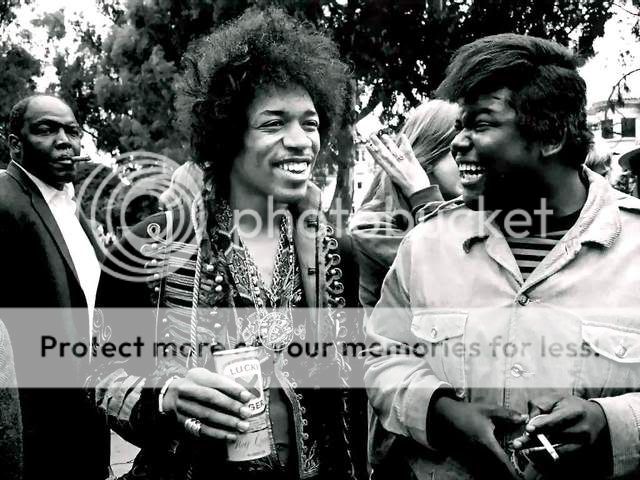
Buddy Miles with Jimi Hendrix
After Electric Flag, Miles would begin involvement with the legendary Jimi Hendrix. Miles had met Jimi Hendrix in an earlier time when both were acting as sidemen for other artists in the early ’60s. The meeting had occurred in Canada in 1964, at a show both were participating in.
Miles said of his first meeting with Hendrix: “He was playing in the Isley Brothers band and I was in Ruby and the Romantics … [Jimi] had his hair in a pony-tail with long sideburns. Even though he was shy I could tell this guy was different. He looked rather strange, because everyone else was wearing uniforms and he was eating his guitar, doing flip-flops and wearing chains.”
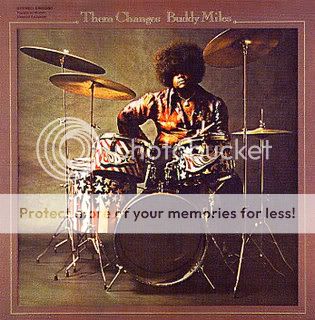
This prefaced a later friendship that would result in varied collaborations between the two artists. In 1967, Hendrix and Miles jammed at the Malibu home of Stephen Stills, and went on to play together again at various times, in both Los Angeles and New York in 1968. Hendrix occasionally joined Electric Flag on stage. Soon after, Jimi Hendrix started opening his recording style to include guest artists. And in this mode Hendrix was working in, Buddy Miles quite naturally was invited to participate. Miles took part in the session recordings for Electric Ladyland, playing on the songs “Rainy Day, Dream Away” and “Still Raining, Still Dreaming”.
Them Changes- The Band of Gypsys
In 1969 an extremely busy Hendrix would somehow find time to produce the first two albums released by Buddy Miles’ own band, Buddy Miles Express – Expressway To Your Skull and Electric Church. There was obvious public curiosity as to whether the name of the band “Buddy Miles Express” was influenced by Hendrix’s act, “The Jimi Hendrix Experience”.
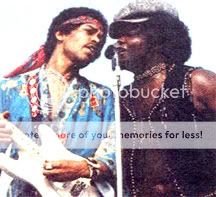
Soon after the release of the groundbreaking Electric Ladyland album, Noel Redding (original Experience bass player) and Mitch Mitchell (the Experience drummer) had both parted company with Hendrix, not least because of constant wrangling between Hendrix’s manager(Michael Jeffery) and his producer (Alan Douglas), both vying for control of his career. Everyone wanted a piece of Hendrix’s success.
As Buddy Miles explained: “Jimi was not happy. He felt powerless. He couldn’t do what he wanted to do.”
Hendrix’s solution to the problem was to found a short-lived band called Band of Gypsys, and Miles was brought in to join him.
Power of Soul – Band of Gypsys
One of the notable features for his audience at the time was the fact that all of the players were black. This was a first for Hendrix as an international recording star – although he had, of course, played with the Isley Brothers in his early days – and this choice reflected a move toward reconnecting with his soul roots. It also had the effect of re-associating rock with its African American roots.
Stop – Band of Gypsys
Live at the Fillmore East recorded New Year’s Eve 1969/70 was arguably Miles and Hendrix’s most riveting recording. The band was based in New York City where Hendrix was spending the majority of his time. Hendrix, who was tangled in legal litigation concerning contracts he had signed prior to his becoming internationally recognized, was required to release a record to the Capitol Records label as part of the agreement in court. This fact led to the live recording of his collaboration with Buddy Miles and Billy Cox.
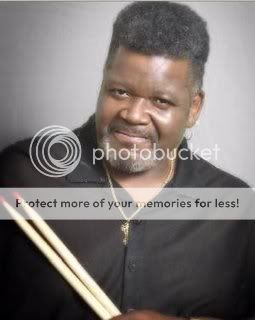
However during a follow up performance a month later, Hendrix had a minor, drug-related meltdown on stage which has also been speculated to have been an act of sabotage on the part of a very frustrated manager Michael Jeffrey, who was not a fan of the Band of Gypsys all-black line-up and strong R&B roots. Miles had this to say about the incident years later:
“Jeffery slipped [Jimi] two half-tabs of acid on stage as he went on … [Jimi] just freaked out. I told Jeffery he was an out-and-out complete idiot and a fucking asshole to boot. One of the biggest reasons why Jimi is dead is because of that guy.”
Miles and Jeffery already had a strained relationship, as Jeffery was always uncomfortable with Hendrix and Miles’ close friendship. After this performance at Madison Square Garden in January 1970, Jeffery fired Buddy Miles and the Band of Gypsys was no more.
Jamming with Buddy Guy
Miles continued to work with Hendrix during early and mid 1970 after the Jimi Hendrix Experience had failed to re-form to record. Miles would share recording studio drumming duties on songs “Room Full of Mirrors”, “Izabella”, “Ezy Ryder” and the first version of “Stepping Stones” (for which Mitchell played a final drum track). These songs have been released in several posthumous Hendrix albums.
Down by the River
Ironically, the album Band of Gypsys – released in May 1970 – made the Top 10 on both sides of the Atlantic, and stayed in the US charts for over a year. Hendrix died in September 1970, prompting the album to sell even better.
Buddy Miles was seen in the Hendrix-family-owned, official video release The Making of Electric Ladyland on Rhino Records. That video featured interviews with the majority of players who were involved in recording the legendary Hendrix album. Miles even went as far as to be video recorded playing his same drum tracks yet again in the studio to the original multi-track recordings of Hendrix. In 1999 Miles appeared on the late Bruce Cameron’s album, Midnight Daydream that included other Hendrix alumni Billy Cox and Mitch Mitchell along with Jack Bruce and others.
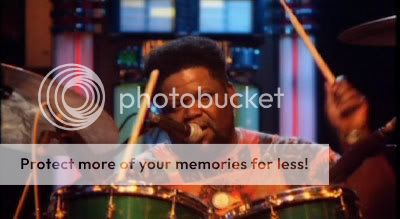
In 2004 Miles reunited yet again with Billy Cox of the Band of Gypsys to re-record songs from the original live album of 1970 with guitarists Eric Gales, Kenny Olsen, Sheldon Reynolds, Andy Aledort, and Gary Serkin. The album, titled The Band Of Gypsys Return, was released in 2006. Until his death, Buddy Miles continued to be active musically and performed many shows with proceeds going to help support victims of natural disasters and other noble causes.
In 2005 Buddy Miles began collaborating with Florida based Guitar Virtuoso Tony Smotherman in which the two toured the Southeast with a Blues-Rock Band performing various pieces from Miles’ Collaborations with Jimi Hendrix. Miles and Smotherman last performed at the Austin Convention Center at the 2007 Summer NAMM Show with Vernon Reid of Living Color.
Buddy Miles played his last live dates in 2007, on the West Coast of the United States with special assistance. He was forced to cancel the remaining dates because of heart problems.
|
instrumentalpavilion wrote on Jun 7, ’08
Thanks for this post, I see you are up burning the midnight oil as well.
|
|
Great post!
good work you should post this in our group http://efialtis.multiply.com I sent you invNikos |
|
lauritasita wrote on Jun 7, ’08
He was great with Hendrix ! I actually don’t know much about drumming, but I loved his drumming style and would listen to a song just to hear him drum.
|
|
terryridgway wrote on Jun 9, ’08
Yeah, I had missed the fact that he had died…listened to some of his stuff… sounds good..
|

Comments
A Tribute To Buddy Miles (1947-2008) — No Comments
HTML tags allowed in your comment: <a href="" title=""> <abbr title=""> <acronym title=""> <b> <blockquote cite=""> <cite> <code> <del datetime=""> <em> <i> <q cite=""> <s> <strike> <strong>